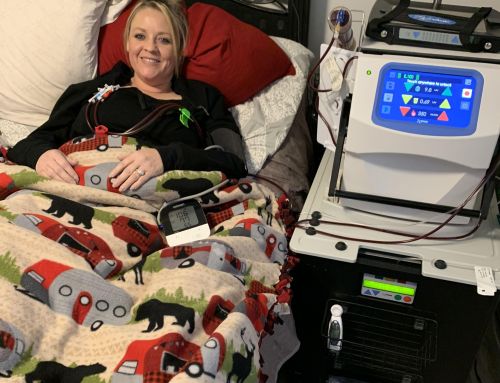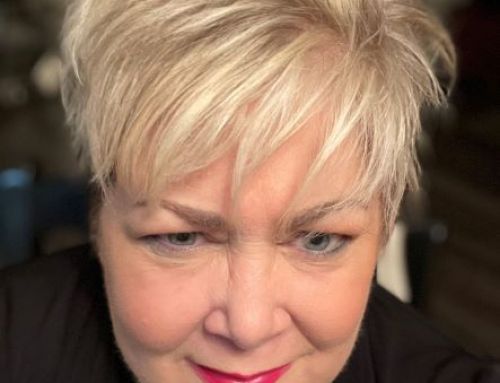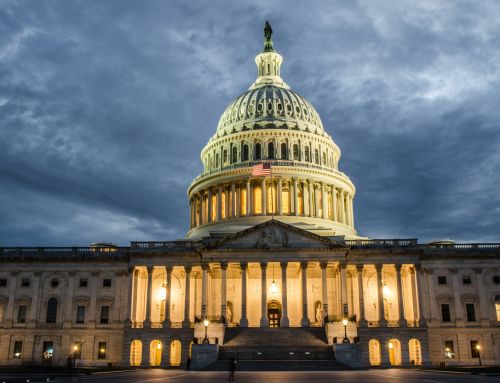The Honorable Phyllis C. Borzi
Assistant Secretary
Employee Benefits Security Administration
United States Department of Labor
200 Constitution Ave NW
Washington, DC 20210
Re: Violations of Part 7 of the Employee Retirement Income Security Act Relating to Health Plans’ Treatment of End-Stage Renal Disease
Dear Assistant Secretary Borzi:
On behalf of the 29,000 dialysis patients and family members that we serve, Dialysis Patient Citizens (DPC) asks that the Employee Benefits Security Administration (EBSA) investigate activities some group health plans have undertaken that we believe discriminate against individuals with kidney failure in violation of Part 7 of the Employee Retirement Income Security Act of 1974 (ERISA) and the Affordable Care Act (ACA). We ask that the EBSA instruct group health plans undertaking these activities to immediately stop implementing the discriminatory provisions and restore benefits to the enrollees entitled to them. We also request that EBSA issue guidance clarifying that such policies are not consistent with Part 7 of ERISA and should not be implemented.1
We have attached the Summary Plan Description (SPD) for one plan, and in the Appendix highlighted the provisions of several other plans that discriminate against dialysis patients. In this letter, we focus on the 2016 Providence Health & Services Health and Welfare Benefit Plan, which includes the Providence Health & Services Health and Welfare Benefit Plan (PN 501), as that plan appears to be enforcing its discriminatory policies against a particular enrollee at this time. This SPD singles out enrollees who develop End Stage Renal Disease (ESRD) by imposing an increased rate of cost-sharing tied to Medicare eligibility and payment rates; and seeks to coerce enrollees with ESRD to terminate their coverage, based solely on an enrollee’s health status. We reference other plans that contain similar provisions in the Appendix. These include:
- Three Premera Blue Cross plans: (1) Balance Gold 500 (Premera Gold); (2) Seattle University High Deductible Health Plan (Premera Seattle University); and (3) Washington Education Association Select Plan 2 (Premera WEA);
- Three Regence plans: (1) Snohomish County Regence Plan B (Regence Snohomish) and (2) City of Tacoma (Regence Tacoma); and (3) Yesco, LLC, Innova Medical Plan $600Deductible (Regence Yesco).
Additionally, we are concerned that other plans may include similar language, but given the small number of individuals who are in group health plans and are diagnosed with ESRD each year, similar language in other plans may not have been identified as of yet. We can say with some confidence that multiple health plans—large group, small group, self-funded, or otherwise—are attempting to expel enrollees upon kidney failure, and that this campaign of disobedience to federal law has its origins with insurance companies operating in the Pacific Northwest.
I. ESRD Is a Complex Medical Condition Affecting a Relatively Small Number of Individuals Each Year and Requiring Life-Sustaining Dialysis Treatments
DPC strives to improve the quality of life for all dialysis patients through education and advocacy. As part of our efforts, we ask regulators to assist patients as they navigate an increasingly complex system of health insurance coverage, which includes unique and often times discriminatory rules and requirements for patients with kidney failure, known as ESRD.
ESRD is a devastating chronic disease frequently accompanied by additional co-morbid conditions that require a complex set of medical services to remain alive. Unless and until the patient receives a transplant, ESRD requires a regimen of hemodialysis treatments, in specially designed centers or using home-based technologies, at least three times per week for up to four hours per treatment. Dialysis is a life-sustaining and essential health benefit, without which patients with kidney failure would die. We are, therefore, extremely concerned when we confront health and welfare benefit policies and insurance plan designs that isolate our patients and treat them differently by imposing insurmountable economic obstacles unique to the treatment of ESRD.
II. Group Health Plan Designs that Single Out Enrollees with ESRD Inappropriately Discriminate against Them
Plan designs that increase cost-sharing requirements on enrollees because they have ESRD and require dialysis are contrary to the requirements of ERISA. ERISA prohibits “a group health plan, and a health insurance issuer offering group health insurance coverage in connection with a group health plan [from] establish[ing] rules for eligibility (including continued eligibility) of any individual to enroll under the terms of the plan based on any of the following health status-related factors in relation to the individual or a dependent of the individual.”2 Among the health factors listed in the statute are: (1) health status; (2) medical condition (including both physical and mental illnesses); and (3) receipt of health care.3
The term “rules for eligibility” includes rules related to “[b]enefits (including rules relating to covered benefits, benefit restrictions, and cost-sharing mechanisms such as coinsurance, copayments, and deductibles).”4
Medical condition is defined in regulation to mean “condition, whether physical or mental, including, but not limited to, any condition resulting from illness, injury (whether or not the injury is accidental), pregnancy, or congenital malformation. However, genetic information is not a condition.”5
A. All of the Plans Reviewed Include Provisions that Treat Enrollees with ESRD Differently than Other Enrollees
None of the plans highlighted comply with these requirements. First, each plan indicates that beginning on the first day of the fourth month of dialysis, the plan will pay for renal dialysis services at a designated percentage of the Medicare allowable amount and places the burden on paying the remaining amount charged by a provider on the enrollee.6 For example, the PN 501 SPD states that on the first of the fourth month of dialysis, the plan will pay for dialysis services at 125 percent of the Medicare allowable amount, while enrollees will be subject to cost-sharing for the remaining provider costs (see page 45). This cost-sharing mechanism applies only to ESRD patients (patients with Acute Kidney Injury would be expected to complete dialysis within three months). Thus, this provision violates the prohibition on creating rules for eligibility by imposing different cost-sharing requirements on enrollees based on their medical condition of having ESRD.
Second, this provision in the PN 501 SPD and the other plans seeks to incentivize these patients to enroll in Medicare directly, thus coercing the enrollees to eliminate continued enrollment in the plan based on the fact of their medical condition (ESRD). While an enrollee may wish to remain in the group health plan for the 30-month period established under the Medicare Secondary Payer statute,7 this provision would increase his/her out-of-pocket expenses such that he/she may no longer be financially able to exercise his/her statutory right. The benefit design places the patient in a no-man’s land. The Plan purports to revoke the enrollees’ access to rates negotiated by the plan administrator with providers. While we have not seen any Explanation of Benefits forms issued by this plan’s administrator, we have seen EOB forms issued by these administrators which, after paying only a unilaterally determined arbitrary amount, show the “member’s responsibility to provider” as the difference between the amount paid and “chargemaster” rates that exceed the negotiated rates and therefore overstate the member’s responsibility even further. The purpose of these forms, which wrongfully suggest that the patient owes tens of thousands of dollars, is to induce sticker shock on the part of the patient and frighten him or her into enrolling in Medicare. No other type of enrollee is subject to such practices.
In addition, the PN 501 SPD includes other language that misleads enrollees by suggesting that federal law requires individuals with ESRD to enroll in Medicare four months after having been diagnosed with ESRD:
The Medicare Secondary Payer statute requires the Plan to identify Members in the Plan, including enrolled Eligible Family Dependents, who are eligible for Medicare, including those eligible because of ESRD. To ensure the correct Coordination of Benefits, Members are required to provide the Plan the basis for their eligibility for Medicare (age, ESRD, or disability) and the effective date of Medicare Part A and Part B.8
This language implies that Medicare enrollment after three months of dialysis9 is required, yet the Congress has expressly stated that ESRD patient enrollment in Medicare is optional.10 PN 501 SPD further states that ESRD patients enrolled in the plan who decide to enroll in Medicare as their primary payer will receive Medicare Part B premiums paid up to a lifetime maximum of $5,500.11 No other Medicare-eligible enrollee is provided such an incentive to enroll in Medicare. While this incentive is offered, the PN 501 SPD does not explain that if an enrollee seeks to enroll in Medicare and receive this assistance, the enrollee will not be able to disenroll from Medicare if an enrollee’s employment situation changes and they require other coverage or other consequences of making this choice. These policies do not offer choice, but rather seek to shift enrollees with high claims risk (ESRD patients) from the plan to a government payer (Medicare), contrary to the prohibition on creating rules for eligibility by restricting the enrollees’ ability to continue their enrollment in the plan based on their medical condition of ESRD.
Third, PN 501 SPD also states that for dialysis services the deductible “does not apply.” While we acknowledge that there is some ambiguity in this statement, taking the language of the provision in toto, it appears that the plan means that the additional expenses incurred by the enrollee will not count toward the deductible. Regence Yesco directly states that any out-of-pocket balances related to obtaining dialysis services do not apply toward the out-of-pocket maximum. This policy creates yet another financial burden on the enrollee because of his/her medical condition. No other enrollee is subject to out-of-pocket costs not being counted toward the deductible. Again, this violates the prohibition on creating rules for eligibility by imposing different deductibles on enrollees based on their medical condition of having ESRD.
B. The Differential Treatment of Enrollees with ESRD Is Prohibited under ERISA § 702(a) and Its Implementing Regulations and Guidance.
These rules of eligibility set forth in PN 501 SPD and the other plans reviewed violate the anti-discriminatory requirements of ERISA § 702(a) and are similar to the situation in Example 5 in the implementing regulations.
Example 5.
(i) Facts. A group health plan applies a $2 million lifetime limit on all benefits. However, the $2 million lifetime limit is reduced to $10,000 for any participant or beneficiary covered under the plan who has a congenital heart defect.
(ii) Conclusion. In this Example 5, the lower lifetime limit for participants and beneficiaries with a congenital heart defect violates this paragraph (b)(2)(i)because benefits under the plan are not uniformly available to all similarly situated individuals and the plan’s lifetime limit on benefits does not apply uniformly to all similarly situated individuals.12
Just as it is impermissible for a plan or issuer to separate enrollees based on the fact that they have a congenital heart defect, it is equally impermissible to separate enrollees based on the fact that they have ESRD. The plan’s policy creates a de facto higher copayment amount, which is applied solely to enrollees because they have ESRD. This practice is no different than the practice in Example 5 of establishing a lower lifetime limit on benefits that applies only to individuals with a congenital heart defect.
The PN 501 SPD policies and those of the other plans we reviewed are “highly suspect” and are a subterfuge for discrimination based on a health factor.
Benefits provided under a plan or through group health insurance coverage must be uniformly available to all similarly situated individuals (as described in paragraph (d) of this section). Likewise, any restriction on a benefit or benefits must apply uniformly to all similarly situated individuals and must not be directed at individual participants or beneficiaries based on any health factor of the participants or beneficiaries (determined based on all the relevant facts and circumstances)…for example, a plan or issuer may limit or exclude benefits in relation to a specific disease or condition, limit or exclude benefits for certain types of treatments or drugs, or limit or exclude benefits based on a determination of whether the benefits are experimental or not medically necessary, but only if the benefit limitation or exclusion applies uniformly to all similarly situated individuals and is not directed at individual participants or beneficiaries based on any health factor of the participants or beneficiaries. In addition, a plan or issuer may impose annual, lifetime, or other limits on benefits and may require the satisfaction of a deductible, copayment, coinsurance, or other cost-sharing requirement in order to obtain a benefit if the limit or cost-sharing requirement applies uniformly to all similarly situated individuals and is not directed at individual participants or beneficiaries based on any health factor of the participants or beneficiaries. In the case of a cost-sharing requirement, see also paragraph (b)(2)(ii) of this section, which permits variances in the application of a cost-sharing mechanism made available under a wellness program.13
First, the limitations, exclusions, and cost-sharing mechanisms set forth in PN 501 SPD and the other plans reviewed do not comply with the requirements for permissible limitations and exclusions because a carve-out of ESRD patients cannot meet the requirements for a similarly situated group.14 Each of the limitations and exclusions apply only to enrollees because of their medical condition, not the classifications the regulation highlights as permissible (e.g., bona fide include full-time versus part-time status, different geographic location, membership in a collective bargaining unit, date of hire, length of service, current employee versus former employee status, and different occupations). Thus, enrollees with ESRD cannot be viewed as a similarly situated group.
It might seem as if Example 7 would permit the differential copayment for ESRD patient requiring dialysis, but that is a false conclusion. Example 7 indicates that a plan may “impos[e] different deductible and coinsurance requirements for prenatal doctor visits and other visits [without violating] paragraph (b)(2)(i) because a plan may establish different deductibles or coinsurance requirements for different services if the deductible or coinsurance requirement is applied uniformly to all similarly situated individuals and is not directed at individual participants or beneficiaries.”15 Left unstated, but equally as important, is that this differential coinsurance requirement is encouraging the use of a wellness program – prenatal visits – and that the differential treatment lowers the cost-sharing requirements. This “benign discrimination” is permissible under ERISA § 702(a) because it benefits the enrollee. The policies of each of the plans reviewed create a negative financial burden on enrollees with ESRD and seek to discourage individuals with ESRD requiring dialysis to remain enrolled in their group health plan by increasing the coinsurance requirements for the only treatment option short of a transplant that is available to them.
Second, the “reward” of having the plan provide financial assistance to pay an enrollee’s Medicare Part B premiums is also inappropriate because it is not based on a wellness program, which is defined as “a program of health promotion or disease prevention.”16 Rather, the premium assistance is based solely on the fact that the enrollee with ESRD has now become eligible to enroll Medicare, if he/she decides to do so. A wellness program:
must be reasonably designed to promote health or prevent disease. A program satisfies this standard if it has a reasonable chance of improving the health of, or preventing disease in, participating individuals, and it is not overly burdensome, is not a subterfuge for discriminating based on a health factor, and is not highly suspect in the method chosen to promote health or prevent disease. This determination is based on all the relevant facts and circumstances.17
Providing premium assistance to individuals with ESRD requiring dialysis is not promoting health or preventing disease. Rather, it is incentivizing these enrollees to go away.
The incentives created by these policies, especially the policy to pay the Medicare Part B premiums of an enrollee with ESRD, are inconsistent with the regulations and guidance. The Part B premium payments seem to particularly run afoul of specific guidance outlined in the November 2014 Frequent Asked Questions guidance.
[I]n the Departments’ view, providing cash as an alternative to health coverage for individuals with adverse health factors is an eligibility rule that discourages participation in the group health plan. This type of arrangement differentiates based on a health factor and is outside the scope of the Departments’ regulations on benign discrimination, which permit only discrimination that helps individuals with adverse health factors to participate in the health coverage being offered to other plan participants.18
Thus, any effort to suggest that these limitations, exclusions, and cost-sharing mechanisms are permissible because they apply to all enrollees should be dismissed in light of the fact that each mechanism is triggered based on a health factor, namely the enrollee’s medical condition of ESRD.19
Collectively, we believe the language of PN 501 SPD and the other plans reviewed is designed to discriminate against enrollees with ESRD by imposing higher cost-sharing requirements based on their health factor alone and by virtually mandating enrollment in Medicare. These policies would effectively terminate the plan benefits for such enrollees once Medicare becomes the primary payer. The enrollees to whom these policies apply are targeted solely based on a health factor – ESRD status. As such, we believe these policies violate the requirements of ERISA Part 7. We ask that the EBSA investigate PN 501 and the other plans identified in this letter specifically and instruct the group health plan undertaking these activities to immediately stop implementing the discriminatory provisions and restore benefits to the enrollees entitled to them. Similar actions should be taken against other plans if such short-changing is identified in their plan documents. To avoid future problems, we request that the EBSA also issue guidance clarifying that such policies are not consistent with Part 7 of ERISA and should not be implemented.
III. Conclusion
While we believe the law governing this matter is clear, it is worth reviewing the important policy considerations that favor ESRD patients’ right to retain employer-sponsored insurance. The option to maintain private health coverage is significant to individual ESRD patients for several reasons.
First, Dialysis Patient Citizens’ 2015 Annual Membership Survey, conducted by the IPSOS international research firm, found that dialysis patients prefer private coverage. We asked several questions from the Consumer Assessment of Health Plan Survey (CAHPS) to gauge relative satisfaction with their coverage. We found:
- 77 percent of patients rate their private health insurance as the “best health insurance plan possible,” compared to 71 percent for Medicare.
- Medicare beneficiaries are more than twice as likely as private health plan members (13% versus 5%) to report having trouble getting health care that they wanted or needed.
- Medicare beneficiaries are more likely than private health plan members to report difficulties in getting the specific medication they need, difficulty getting someone on the phone to answer questions, and delays in receiving care or treatment.
Second, there is a significant financial advantage for dialysis patients to keep their private coverage. According the Bureau of Labor Statistics, the average private health insurance plan has an actuarial value of 88.9 percent, significantly higher than Medicare’s 80 percent. Health maintenance organizations—which are NOT available to ESRD patients through Medicare—have an average actuarial value of 91.8 percent. It is crucial for dialysis patients’ financial well-being that they retain equal access to private health insurance, especially in states that do not give them access to Medigap supplemental coverage.
Finally, and most importantly, if a patient can lose coverage when his or her chronic kidney disease (CKD) progresses to end-stage renal disease (ESRD), an insurer has a perverse financial incentive not to take all possible measures to preserve the patient’s kidney functions. This is because CKD typically accompanies other co-morbidities, often making CKD patients more expensive than other enrollees. An insurer could off-load those expenses onto the Medicare program if the patient’s kidneys fail sooner rather than later. Further, an insurer with no financial stake in a patient’s well-being after onset of ESRD has no incentive to smoothly manage the transition from CKD to ESRD by obtaining a preemptive transplant if possible, creating a fistula for safe dialysis access, and educating the patient about kidney failure in advance so he doesn’t “crash” into dialysis, resulting in infections and hospitalizations. These perverse incentives are not present when plans must pay for renal dialysis for at least 30 months before Medicare becomes the primary insurer.
Maintaining all-payer responsibility for renal care is also important to patients, and society, collectively.
- Private insurers have been an important source of innovations and improvements in ESRD care. It is an unfortunate truth that the primary payment venue for service delivery innovations for the ESRD population has been capitated health plans, not the fee-for-service Medicare program. Only commercial insurers have both the incentive and the capability to properly prepare a patient for ESRD and to develop improved care techniques to avoid costly complications. The “Optimal ESRD Start” program pioneered by Southern California Kaiser Permanente represents the most sophisticated effort to manage the CKD-ESRD transition. While one would like to believe that an employer health plan would implement such a program in the absence of a requirement to continue coverage after kidney failure, in fact, plans would have no financial incentive to make this investment. Medicare’s ESRD Disease Management Demonstration, a partnership between health plans and providers in which entities were paid a capitated fee, spurred the first integrated care management systems for dialysis patients. The techniques developed at these demonstration projects are currently being deployed in Medicare Advantage Special Needs Plans (SNPs) such as Village Health and CareMore, and through partnerships between large dialysis organizations with Aetna and Highmark to manage those insurers’ ESRD patients. It is important to note that these services, which have proven successful in reducing complications and hospitalizations, are only available to FFS Medicare patients in a handful of ESRD-specific Accountable Care Organizations.
- Private insurers maintain a diverse payer mix. While Medicare payments are supposed to be set so as to cover the cost of providing a service on average, the payment formula does not guarantee that every individual provider or service site will recover its costs. Many individual hospitals and dialysis clinics have negative Medicare margins. With regard to dialysis clinics, the Medicare Payment Advisory Committee has found that facilities with negative margins tend to be those with low volumes and are clustered in areas with relatively low population density. A diverse payer mix can cross-subsidize care sites with negative margins. If dialysis becomes unprofitable for private firms to provide, operation of clinics will have to be shifted to non-profit hospitals or safety-net institutions.
Thank you for your attention to this important matter. If you have any questions or would like additional information, please do not hesitate to contact me.
Respectfully submitted,
Hrant Jamgochian
Executive Director






























